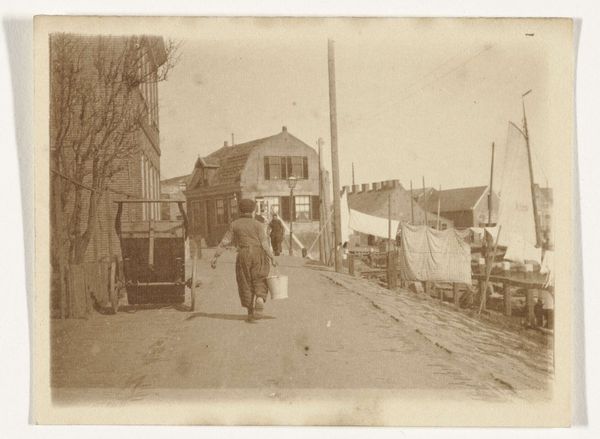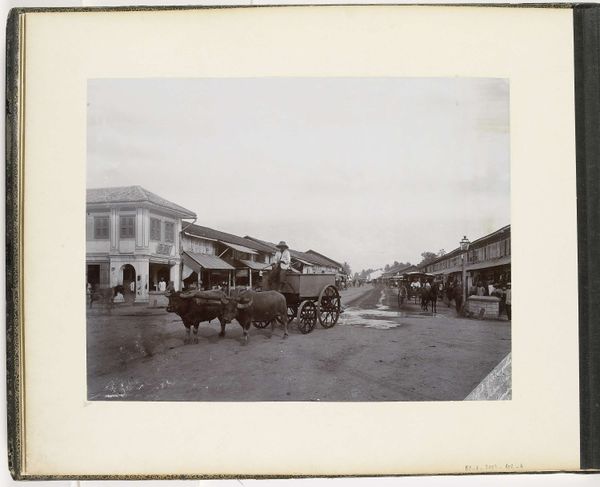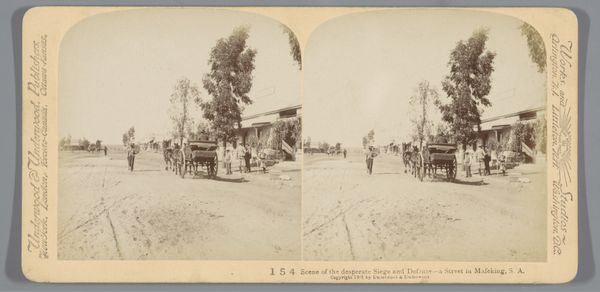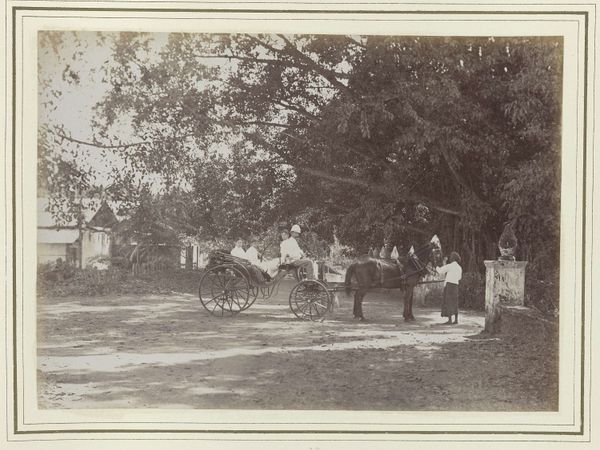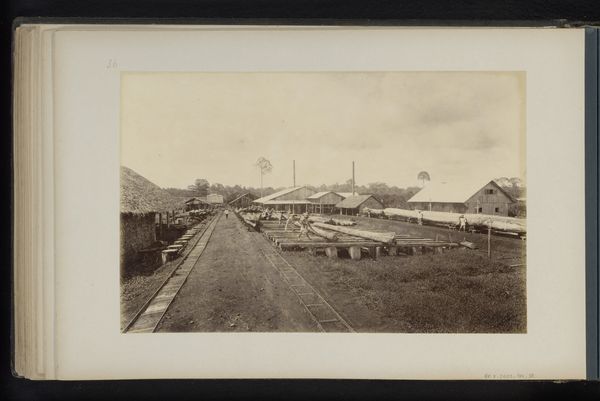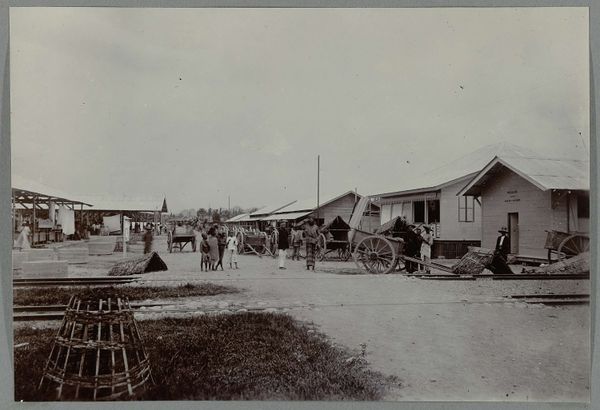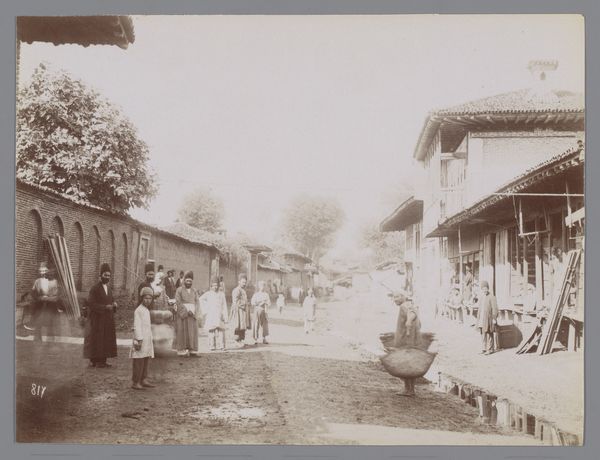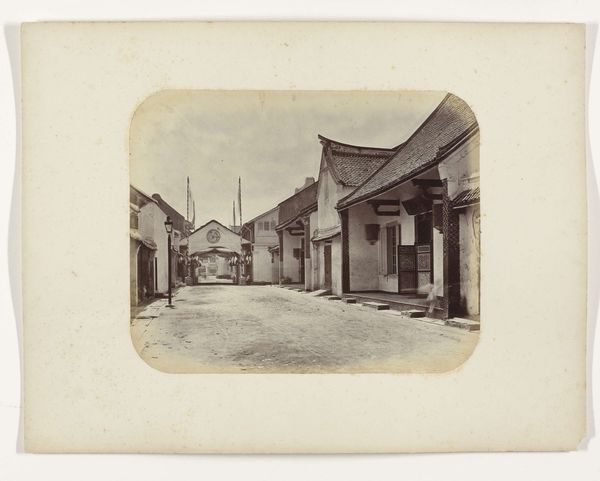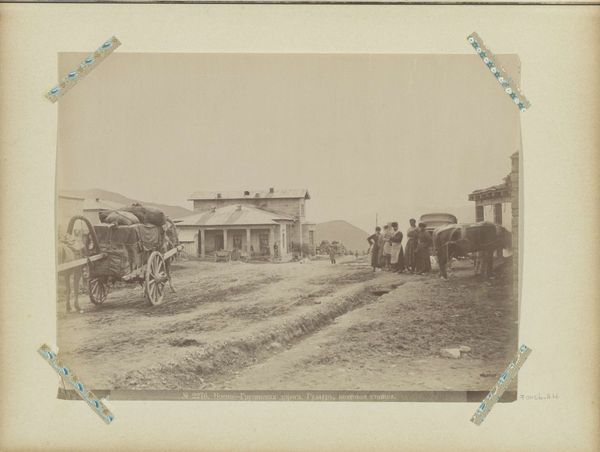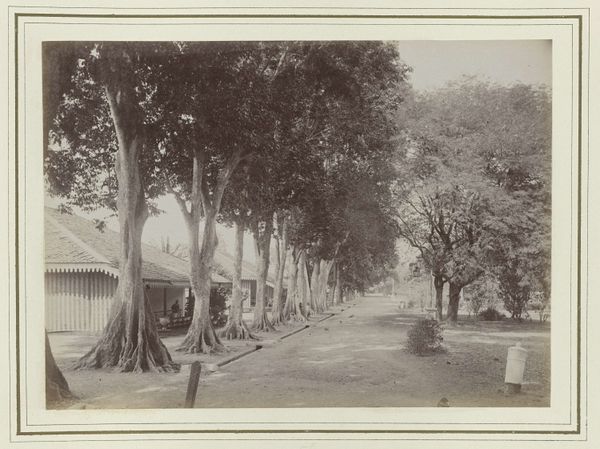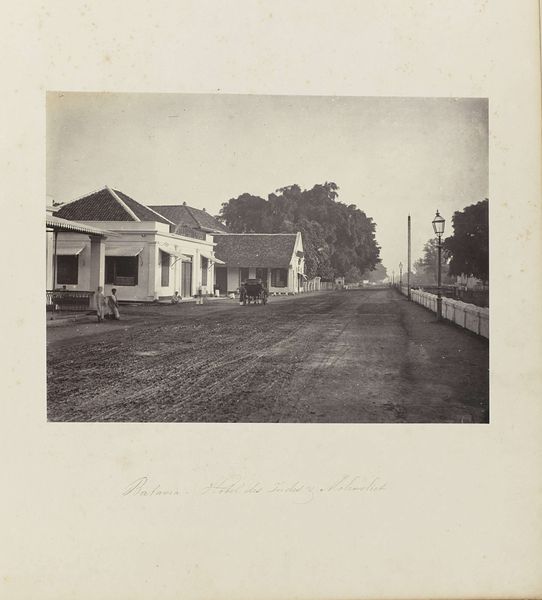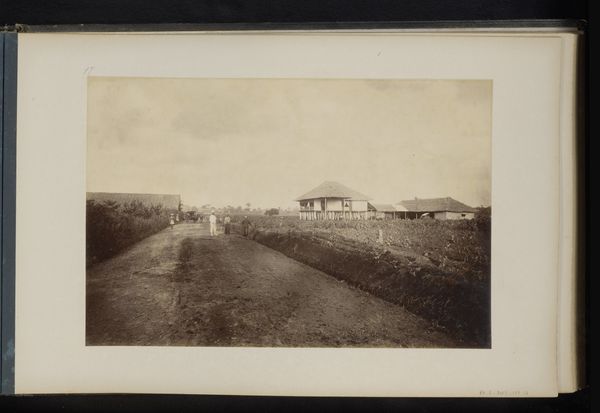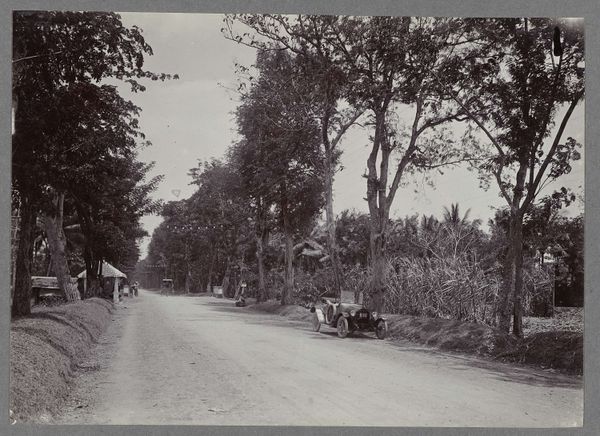
photography
#
photography
#
street
#
realism
Dimensions: height 168 mm, width 230 mm, height 240 mm, width 340 mm
Copyright: Rijks Museum: Open Domain
Curator: Before us we have "Koets en reisgezelschap in een straat te Tószeg," taken in 1928 by Albert van Giffen. The image captures a horse-drawn carriage and its passengers on a dusty street in Tószeg. Editor: My first impression is that of stillness; despite the people and activity, a profound quiet seems to emanate from the muted tones and the composition itself, which is incredibly linear. Curator: The stark, almost journalistic quality underscores a slice of life from that era. You’ll note van Giffen’s use of realism; his careful detail captures the light on the building facades and the texture of the dirt road. It grounds the image in the everyday realities of its subjects. Editor: Precisely, the geometric forms created by the buildings and carriage offer a scaffolding to the subjects. The streetscape has clear architectural implications within its historicity; this linearity structures our viewing experience but also provides a sense of confinement, like peering into another world. I also read the muted tonal range to have a sort of semantic impact too. Curator: That’s interesting; I'd interpreted that restraint in tone as simply being tied to photographic limitations. It's curious to ponder if this choice reveals socio-economic dimensions of this community during the period, in which a full tonal scale wasn't appropriate, so there are inherent limitations, artistic and technological. Editor: We can ponder such. Still, even those technological choices have implicit stylistic repercussions, the material quality is integral to reading the photograph's effects. Do you feel the texture of the street reinforces social commentary of daily labour? Curator: Certainly, one could posit that. I see, though, it's the overall arrangement of forms that strikes me – how he frames the event, almost as a theatre production; like a staged diorama capturing its spatial, cultural, and social interactions. Editor: Yes! From a critical perspective, it invites conversation concerning materiality of photography and of quotidian acts. It’s a testament to how formalism illuminates structures, whilst the historian focuses more on society’s imprint upon any singular art form. Curator: Agreed. Van Giffen's image allows a multilayered dissection across disciplines and histories—quite affecting to discover new readings in photography so deeply steeped in the past.
Comments
No comments
Be the first to comment and join the conversation on the ultimate creative platform.

